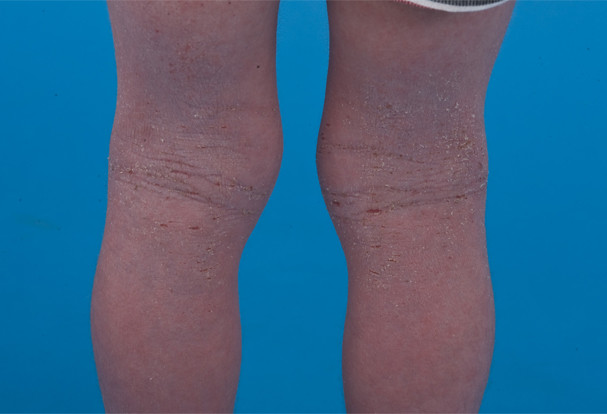A new therapy that targets the immune system has shown promise for treating atopic dermatitis, the most common form of eczema, in a trial led by University of Oxford scientists.

The small initial study, published in the journal Science Translational Medicine, is the first trial in humans to show that atopic dermatitis could be treated by targeting an immune signaling molecule called IL-33.
The positive results in the initial trial, in which 12 patients were treated with the therapy, called etokimab, have led to a larger clinical trial involving 300 participants.
The trial, funded by the company AnaptysBio Inc, was led by researchers funded by the NIHR Oxford Biomedical Research Centre and the UKRI Medical Research Council and based at the MRC Human Immunology Unit at Oxford’s John Radcliffe Hospital.
Inflammation
Atopic dermatitis is a long-term condition that results in dry, cracked, red, itchy and painful skin. ‘Atopic’ refers to increased activity of the allergy component of the immune system, which can lead to inflammation.
It affects an estimated 10 to 30% of children and two to 10% of adults.
For people with severe atopic dermatitis, current treatments include drugs like ciclosporin and methotrexate, which are less targeted, and many people can experience side-effects.
All 12 patients treated with etokimab showed a reduction in their physical eczema symptoms after treatment – at least halving their score on a scale of disease severity – and 83% achieved this improvement after 29 days.
After 29 days, there was a 40% reduction in eosinophils in the blood, a type of immune cell involved in allergic sensitivity.
Prof Graham Ogg of the MRC Human Immunology Unit and Oxford BRC, who led the study, said: “This clinical trial is the first time we’ve looked at how blocking IL-33 can help patients with atopic dermatitis and we have found they experienced significant improvement in their symptoms after a single dose.
“These results are only very preliminary, and we need to be cautious, but we’re currently testing the therapy in a larger double-blind randomised trial in people with atopic dermatitis and we look forward to seeing the results.”
He added: “New antibody therapies, like etokimab, are exquisitely specific in what they target and they have the potential to help patients and to help us better understand disease.”
Molecule
As well as measuring how much the participants’ symptoms improved, the researchers also conducted tests to better understand the role of IL-33 in the skin.
The molecule that etokimab targets, IL-33, is released by damaged skin cells and ‘recruits’ immune cells to the site. The researchers wanted to understand if blocking IL-33 altered the influx of immune cells associated with inflammation.
The 12 participants received a placebo injection and then a week later received the etokimab injection. Four days after each injection they were given small injections in the skin to challenge the immune system: a placebo in the left arm, and house dust mite allergen (to which they were allergic) in the right arm. The next day, fluid and cells at the site of the challenges was sampled.
The researchers found that after the etokimab treatment, patients had fewer neutrophils, immune cells involved in inflammation, moving to these sites.
This led the researchers to suggest that future research could investigate if treatments targeting IL-33 might also be beneficial for other immune diseases that can be associated with neutrophils, such as psoriasis and neutrophilic asthma.
Prof Ogg said: “We’ve been studying the role of IL-33 in human skin for nearly 10 years, with the lab work suggesting IL-33 might be a potential target for therapies. So we are pleased that in this first human trial in patients with atopic dermatitis, we have confirmed that the IL-33 pathway appears to be a therapeutic target in its own right.
“Doing experimental research in humans in crucially important if we are to make advances in treatment, and in this study it was initially surprising to us that the dominant effect of etokimab was reducing neutrophil migration into the skin.
“I’m very grateful and humbled by all the patients who’ve generously contributed skin and blood samples over the years to help us to understand the underlying the processes that contribute to their atopic dermatitis – our research completely depends on such support,” he concluded.